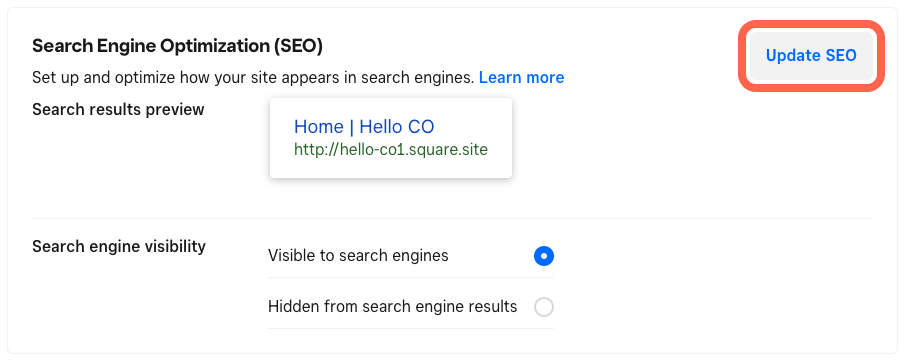Unveiling the Unconventional Mediums in Google Analytics Beyond Default Settings
In the realm of digital analytics, Google Analytics stands as a foundation for services seeking to understand their online visibility. By venturing past the surface area and delving into the intricacies of social media information, e-mail campaign performance, referral website traffic resources, direct traffic patterns, and custom network groups, a treasure trove of information waits for those ready to accept a more nuanced strategy.

Leveraging Social Media Site Insights
Sometimes forgotten, yet profoundly valuable, is the method of leveraging social media understandings within the world of Google Analytics. By integrating information from platforms like Facebook, Twitter, Instagram, and LinkedIn into Google Analytics, organizations can acquire a much deeper understanding of their audience and the efficiency of their social media sites projects.
Through this combination, marketers can track and examine individual actions on their website that stems from social media sites systems. They can recognize which social media channels are driving the most traffic, which material is reverberating with the target market, and which campaigns are converting the most leads. This insight enables for data-driven choices to optimize social media techniques and improve general advertising efficiency.
In addition, by incorporating social networks understandings with Google Analytics, organizations can develop extra targeted and personalized campaigns - what is not considered a default medium in google analytics. They can use demographic information, interests, and online behaviors gathered from social media to refine their audience segmentation and deliver customized messages that reverberate with details consumer teams. This targeted strategy can bring about greater interaction, boosted conversions, and eventually, enhanced return on financial investment
Discovering Email Campaign Performance
Uncovering Email Project Efficiency includes examining essential metrics and performance indicators to review the performance of email marketing efforts. When diving into email project efficiency, it is vital to examine metrics such as open rates, click-through prices, conversion prices, and unsubscribe rates. Open up prices indicate the percent of receivers who opened up the e-mail, offering insight right into the efficiency of subject lines and sender names. Click-through prices determine the percentage of receivers that clicked on web links within the email, revealing interaction levels. Conversion prices track the percentage of receivers who finished a preferred action after clicking a link in the e-mail, such as purchasing or signing up for an e-newsletter. Finally, unsubscribe prices highlight the number of recipients that opted out of obtaining additional emails, losing light on email material quality and importance. By analyzing these metrics, online marketers can adjust their email advocate much better involvement and performance.
Studying Referral Web Traffic Resources
After reviewing the performance of email campaigns with vital metrics such as open rates and conversion rates, the next vital action is analyzing referral web traffic sources in Google Analytics to recognize where internet site visitors are originating from and just how they communicate with the site. Referral traffic sources refer to the websites that direct users to your site through clickable links. By diving right into this information, organizations can gain insights right into which outside systems are driving web traffic to their site, whether it be social media sites systems, companion web sites, or on the internet directories.
Evaluating recommendation traffic can provide valuable information on the performance of exterior advertising efforts and partnerships. It helps organizations recognize high-performing recommendation sources that contribute significantly to website web traffic and conversions. By recognizing the habits of visitors coming from various recommendation resources, services can tailor their advertising and marketing methods to optimize engagement and conversions. Google Analytics uses in-depth reports on reference web traffic, permitting services to track the performance of each recommendation source precisely and make special info data-driven decisions to boost their online visibility.
Discovering Straight Web Traffic Patterns
Discovering the straight website traffic patterns in Google Analytics provides important understandings right into customer actions and the effectiveness of campaigns - what is not considered a default medium in google analytics. Direct web traffic refers to visitors who come down on a website by directly typing the URL into their browser, using bookmarks, or clicking on untagged links. Understanding direct traffic patterns can help marketing professionals examine the effect of offline advertising initiatives, brand recognition, and the efficiency of word-of-mouth referrals
By delving right into straight website traffic information, services can discover important info regarding user intent and brand commitment. Assessing the actions of straight visitors, such as the pages they see, the moment invested on site, and the conversion rate, can provide a much deeper understanding of individual this hyperlink interaction and the overall effectiveness of the internet site in transforming visitors into consumers.
Additionally, tracking direct traffic patterns over time allows organizations to recognize patterns, seasonality effects, and the success of details projects or promotions in driving straight brows through. This info can then be made use of to fine-tune marketing strategies, maximize web site content, and enhance the total individual experience to optimize conversions.
Using Custom-made Channel Groupings
Making use of personalized network groupings in Google Analytics permits businesses to categorize and assess their web site web traffic based on details requirements, providing useful insights for enhancing marketing techniques. Custom channel groups enable business to create their very own customized groupings of traffic sources, such as social networks, natural search, e-mail projects, and recommendation traffic. By specifying these groups, organizations can acquire a much deeper understanding of exactly how various advertising and marketing channels contribute to their web site traffic and conversions.
This function is especially helpful for organizations with diverse advertising strategies throughout various systems. For instance, a firm running both paid and organic social networks campaigns can separate in between both to assess their private performance properly. Furthermore, personalized network groups can aid recognize any kind of forgotten or underestimated traffic sources that might be driving beneficial involvement.
Verdict

By venturing past the surface area and delving right into the intricacies of social media data, e-mail campaign performance, reference traffic resources, straight traffic patterns, and custom-made network groupings, a prize chest of information waits for those eager to embrace a much more nuanced Read Full Article strategy. They can determine which social media networks are driving the most traffic, which content is resonating with the target market, and which projects are converting the most leads.After assessing the efficiency of e-mail campaigns through crucial metrics such as open prices and conversion prices, the next essential action is assessing referral traffic sources in Google Analytics to comprehend where internet site site visitors are coming from and how they communicate with the site. Custom-made network groups make it possible for companies to create their own personalized collections of website traffic resources, such as social media, natural search, email campaigns, and recommendation web traffic. By leveraging social media understandings, revealing e-mail project efficiency, assessing referral traffic sources, exploring straight website traffic patterns, and making use of personalized network collections, marketing experts can obtain beneficial understandings into their on the internet presence.